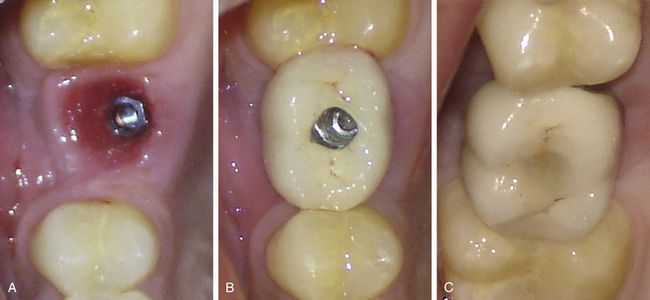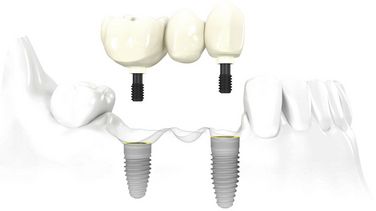Fig 4.1 (A) Final abutment inserted on implant and (B) ceramic crown fixed over it, using luting cement.

Fig 4.2 (A) Implant before prosthetic loading (mirror image); (B) screw-retained ceramic crown fixed over the implant; (C) screw hole closed using tooth-coloured composite.

Fig 4.3 If available bone volume and density allow placing longer and adequate diameter implants with adequate amount of primary stability and bone implant contact percentage, a multiple unit bridge can be delivered over a few implants.
(Courtesy: Nobel Biocare)

Fig 4.4 (A and B) Four implants are inserted in the posterior maxilla to support a four-unit ceramic prosthesis.

Fig 4.5 (A) Only two implants are inserted to support a four-unit ceramic bridge, (B) in lower anterior region.
Implant prosthetic options for completely edentulous patients
For completely edentulous patients, the dental implant is the only option to support a full-arch, fixed prosthesis or to retain loose dentures. Beside the conventional, full-arch, implant-supported prosthesis, advancement in implant component engineering has brought multiple graft-less options (‘all on 4’/‘all on 6’ techniques) for edentulous patients, to deliver fast and fixed prostheses or implants retained overdentures.
1. Implant-supported removable prosthesis (implant overdenture). Depending on the dentist’s preference and various clinical parameters, usually two types of ‘implant overdentures’ are delivered to patients.
2. Implant-supported fixed prosthesis. There are multiple options for the implant-supported fixed prosthesis. Usually a number of implants are inserted in the jawbone and the multiple unit ceramic or hybrid prosthesis is fixed over these implants. The following are different options for the full-arch implant-supported fixed prosthesis:
Stay updated, free dental videos. Join our Telegram channel

VIDEdental - Online dental courses


